One Day in Volterra
Volterra is a hilltop town in Tuscany, known for its charm and many things to do. You can spend a whole day here exploring museums, archaeological sites, restaurants, shops, and enjoying amazing views.
Volterra is a hilltop town in Tuscany, known for its charm and many things to do. You can spend a whole day here exploring museums, archaeological sites, restaurants, shops, and enjoying amazing views.
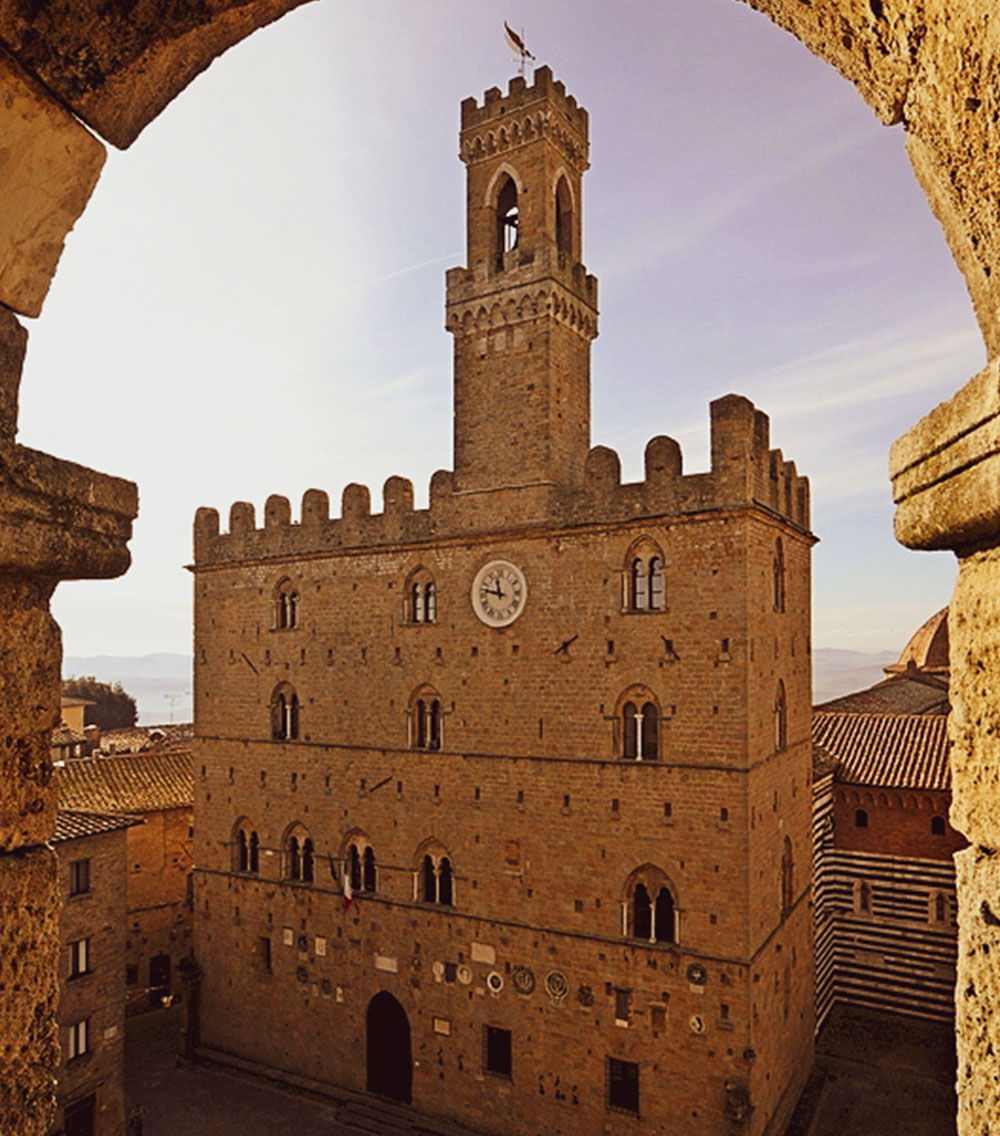
Resonating with the medieval charm typical of Tuscan hill towns, Volterra’s allure lies in its winding streets, exclusive boutiques, grand palaces, and inviting piazzas. However, what sets it apart is its extensive collection of museums and archaeological sites, surpassing those found in neighboring towns like Montepulciano and Pienza. For history enthusiasts, Volterra stands as one of the premier Tuscan hill towns worth exploring.
Numerous films, literature, and video games feature Volterra, with its fortress, old walls, and winding lanes typical of medieval times. Volterra is definitely something you’ve seen if you’ve seen the Twilight series. Volterra is the home of the Volturi, a vampire clan that rules over all vampires on the planet.
That is why we have made this guide to give you a detailed view regarding this ancient and historic town. This itinerary will guide you through the top best things to do in Volterra. Get set as we take you through the town of the vampires as some will call it.
If you’re flying into Italy, you can land at Pisa International Airport or Florence Airport. From there, you can either rent a car or take a combination of train and bus to reach Volterra.
Although there isn’t a train station in Volterra, you can take a train to the nearby cities of Pisa or Florence, and then catch a bus to Volterra. Trains are convenient for those already exploring Italy’s major cities.
SITA buses run from Florence and Pisa to Volterra. The bus journey provides scenic views of the Tuscan countryside and is an affordable option. Be sure to check the schedule and purchase tickets in advance.
The most flexible way to reach Volterra is by car. You can rent a car from Florence, Pisa, or other major cities. From Florence, take the A1 and then the Siena-Firenze highway (SS2), following signs for Volterra. The drive offers stunning scenery.
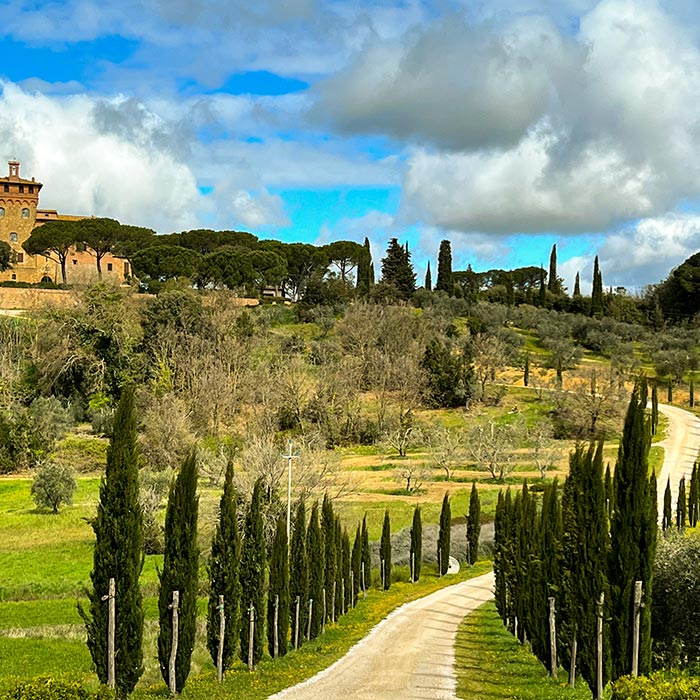
The best way to experience Tuscany is to rent your own car! We recommend booking well in advance using price comparison sites like rental cars if traveling in the peak summer season.

Piazza dei Priori is the heart of Volterra, a stunning medieval square surrounded by impressive buildings, including the Palazzo dei Priori and the Pinacoteca, which houses an impressive art collection. The square is also home to charming cafes and small dining establishments, while there’s also an opportunity to explore an alabaster shop and ascend the Palazza dei Priori tower to enjoy an expansive view of Volterra from above. This square is likely to become a familiar landmark during your visit to Volterra, as it acts as a central hub from which several streets radiate, connecting you to other prominent attractions throughout the town.

The Palazzo dei Priori in Volterra, dating back to 1208, stands as Tuscany’s oldest municipal palace, strategically placed near the seat of episcopal power. Originally symbolizing the town’s autonomy, it later became home to Volterra’s rulers until the Medici conquest in 1472, resulting in alterations that are visible today, such as Florence’s lions and colorful Medici emblems.
Inside, adorned walls display noble insignia, leading to the Council Hall on the first floor, still used for administrative meetings. Particularly noteworthy is an Orcagna fresco from 1383, likely the first Florentine-style artwork in a Volterran public building. An interesting relic, the “canna volterrana,” a local unit of measurement, remains etched in stone.
For the adventurous, climbing the bell tower provides a breathtaking panorama of Volterra and its valleys.
Palazzo dei Priori’s opening hours until November 5th, 2023, are from 9:00 a.m. to 7:00 p.m. daily, with exceptions for certain holidays when it opens at the same time. Starting from November 6th, 2023, the opening times will change to daily from 10:00 a.m. to 4:30 p.m., except for specific dates like December 25th (closed) and January 1st (open from 12:00 p.m. to 6:00 p.m.).
Ticket prices are as follows: Full price: €10.00 Reduced price (for youth aged 6-12, individuals over 60, Coop, and TCI members): €8.00 Adult groups (minimum 10 people): €6.00 Additional fee for guided tours: €2.00
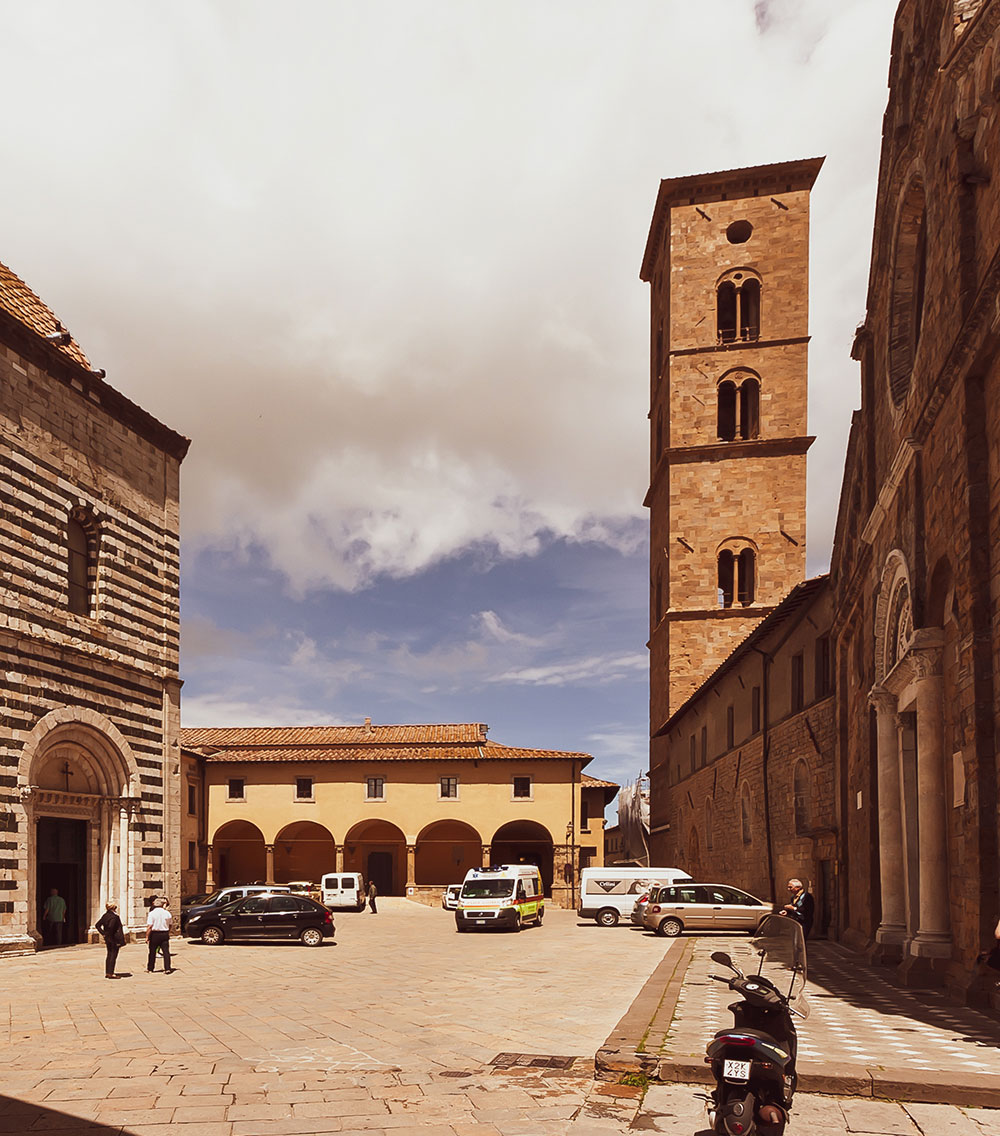
The cathedral, originating in 1120, underwent significant renovations during the Renaissance in 1584 following the Council of Trent. As a result, visitors encounter a blend of Romanesque architecture showcased in the facade, paired with an impressive and lavishly adorned Renaissance ceiling along with several frescoed chapels.
Within the cathedral, numerous artworks by esteemed Italian artists like Andrea della Robbia, Mino da Fiesole, and Benozzo Gozzoli are on display. Notably, Gozzoli crafted a remarkable fresco in 1479, adding to the cathedral’s artistic treasures.
March 1st-March 31st: open on Saturdays and Sundays from 10:00 a.m. to 06:00 p.m.
April 1st-November 1st: open daily from 10:00 a.m. to 06:00 p.m. except on Easter, Easter Monday, Sundays, and holidays when it opens from 12:30 p.m. to 06:00 p.m.
December 26th-January 6th: open daily from 10:00 a.m. to 06:00 p.m.
Closed on: November 2nd, December 25th, January 7th, and March 31st.
Full price: €7.00 (includes an audio-guide)
Concessions: €5.00 (includes an audio-guide) applicable to visitors aged 6 to 18, individuals over 65, Coop and FAI members.
Free: Youth up to 6 years of age, Volterra municipality residents, Disabled visitors (+ one carer per visitor), Clerics of both genders, Teachers accompanying classes or groups, Authorised tour guides, Journalists
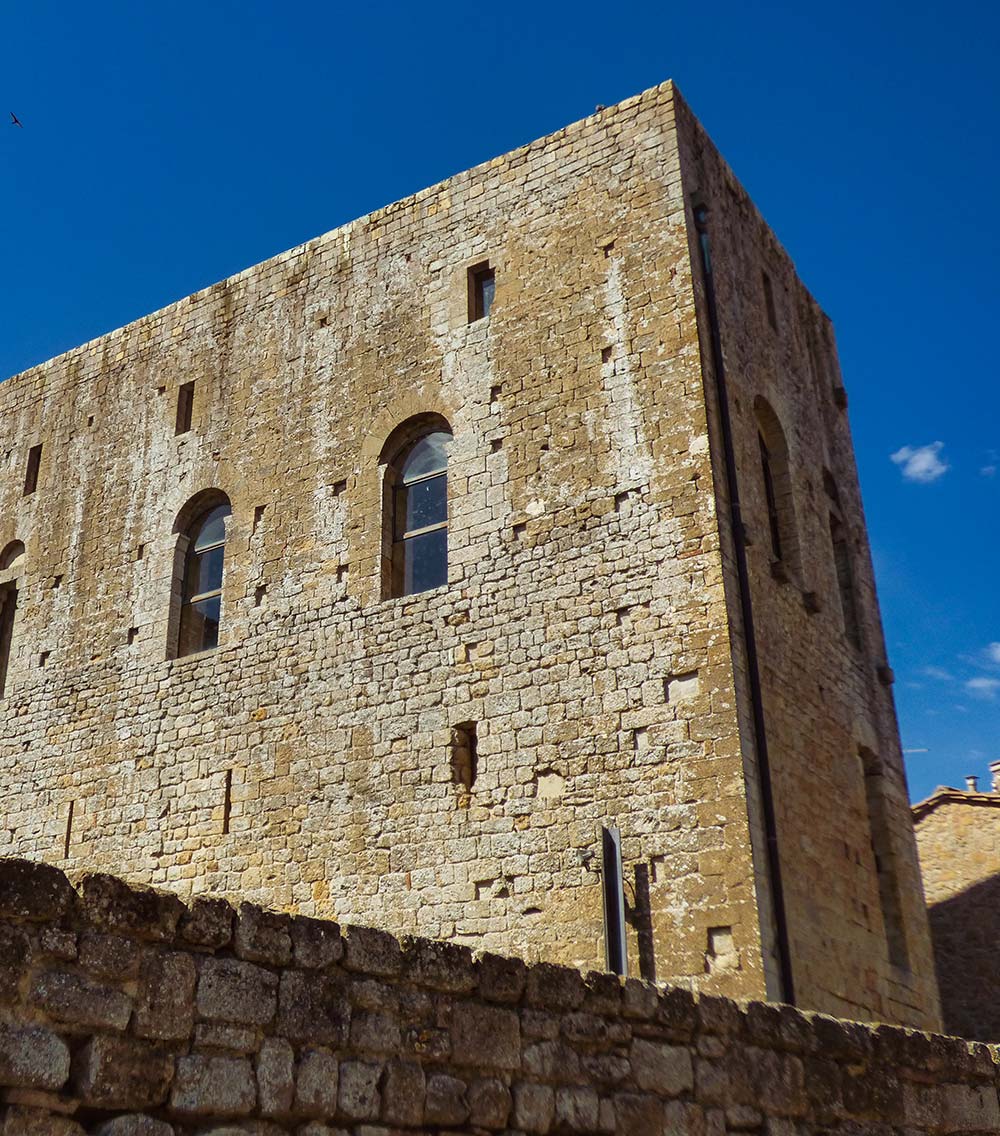
Volterra boasts a rich alabaster tradition seen in various storefronts throughout the city. This ancient craft dates back to Etruscan times, with artisans using traditional techniques passed down through generations. You can shop for handcrafted alabaster items like bowls, picture frames, and sculptures, perfect as souvenirs.
For a deeper dive into alabaster, visit the Alabastar Ecomuseum—an intriguing stop exploring excavation, production, and sculpting of this rock. The museum showcases a fraction of Volterra’s extensive alabaster sculpture collection, spanning from Etruscan eras to contemporary works. Visitors can explore recreated artisan workshops and admire over 300 examples of alabaster craftsmanship.
Ecomuseum is open 9am-7pm from March through October from 10am-4:30pm from November through February.
Admission is €8 and the reduced €6
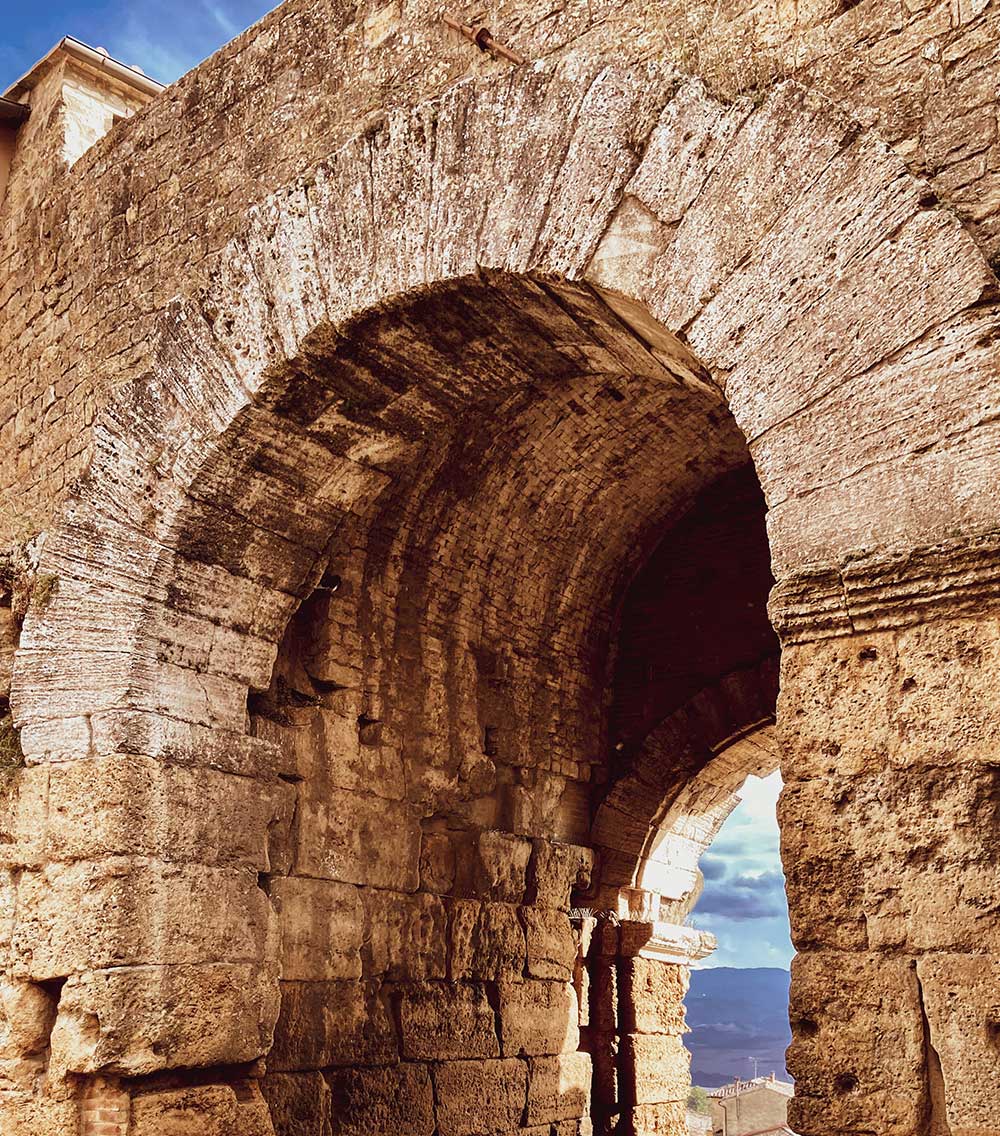
Six gates are present along the Etruscan walls leading into the city, constructed during various periods from the 13th to the 16th centuries. Among these gates, Porta all’Arco stands as the oldest and most preserved, showcasing elements dating back to the 5th century, including its adorned decoration featuring three heads. Porta San Francesco retains remnants of its original frescoes, while Porta San Felice provides excellent panoramic views of the surrounding countryside.
The fortress is open from 10:00 AM to 7:00 PM(April to October)
Admission is €5.
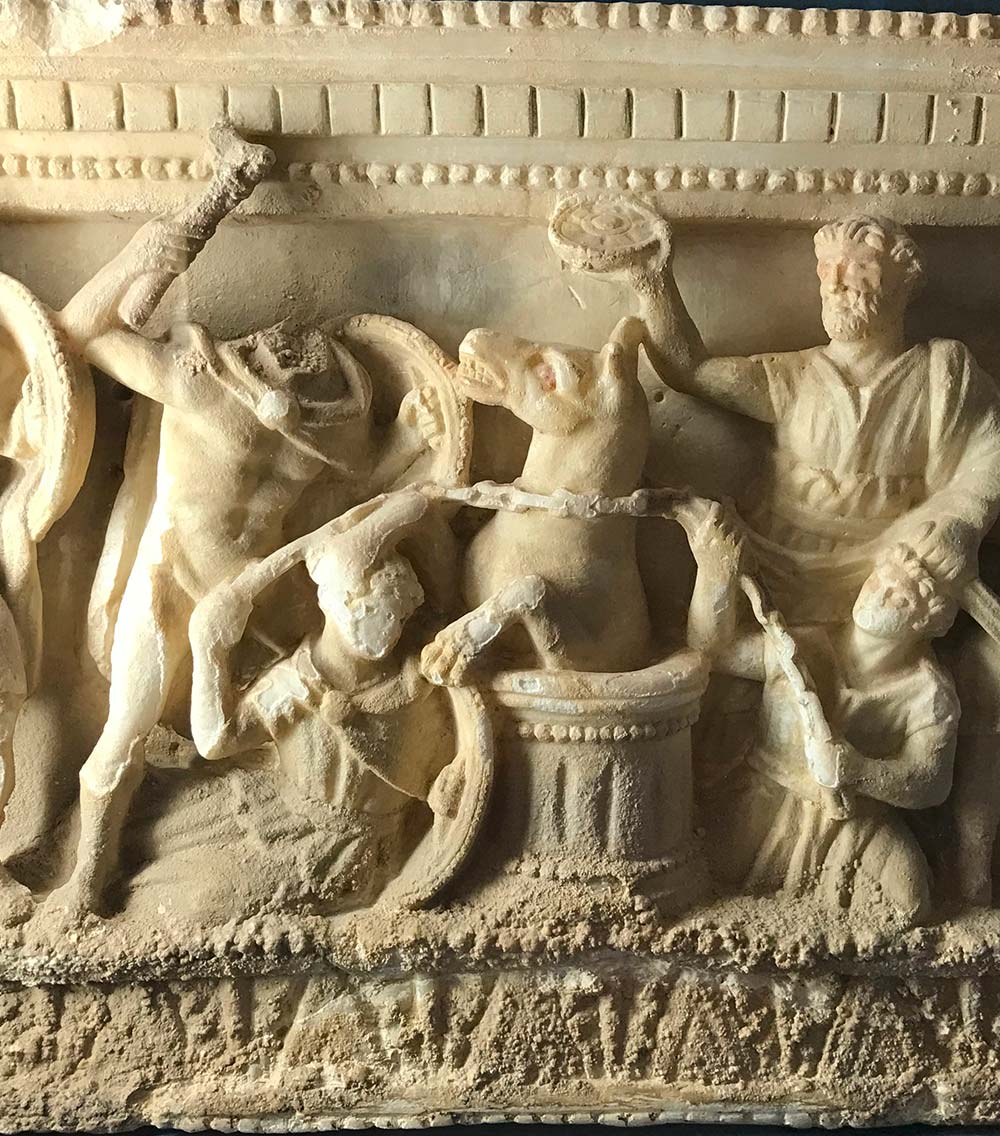

The museum contains an extensive collection of funeral urns dating back to the Hellenistic and Archaic periods, crafted from alabaster and tufo rock found in the region. Established in 1761 by Mario Guarnacci, a noble, it stands as one of Europe’s oldest public museums. Guarnacci generously donated his vast archaeological collection, amassed through years of research and acquisitions, to the public of Volterra. This donation, inclusive of a library holding over 50,000 volumes, not only enriched the city’s cultural heritage but also ensured the collection remained intact and wasn’t dispersed.
Highlighted attractions deserving full attention during the visit include the bronze statuette “Shadow of the Night,” a 1st-century AC cinerary urn cover named “Urn of the Sposi,” a terracotta sculpture depicting an elderly couple on a bed, and the Avile Tite Stele. Visitors should also take time to appreciate the museum’s diverse range of items crafted from terracotta, alabaster, and various stones.
The Etruscan Academy Museum is open 9am-7pm from March through October, 10am-4:30pm from November through February. The museum is closed December 25 and January 1.
Admission is €8; reduced €6.

Just outside the medieval walls near Porta Fiorentina lies the Roman theater, often the first sight visitors encounter if they park nearby, making it an ideal initial stop. Constructed in the 1st century AD, this amphitheater stands on an ancient Etruscan site and remains one of Italy’s most exceptional and well-preserved structures.
Adjacent to the theater, remnants of 4th-century Roman baths and the Roman forum are found. Throughout the Middle Ages, this area served as a landfill, completely concealing the site. Excavations commenced only after 1951.
During the winter closure of the site, visitors can explore the walled city by ascending through the door, turning right, and enjoying a view of the area from the free terrace on Via Lungo Le Mura del Mandorlo. From this vantage point, one can easily observe the arched passageways connecting the stage to the rear of the theater, along with the covered area where up to 2000 spectators could gather during intermissions.
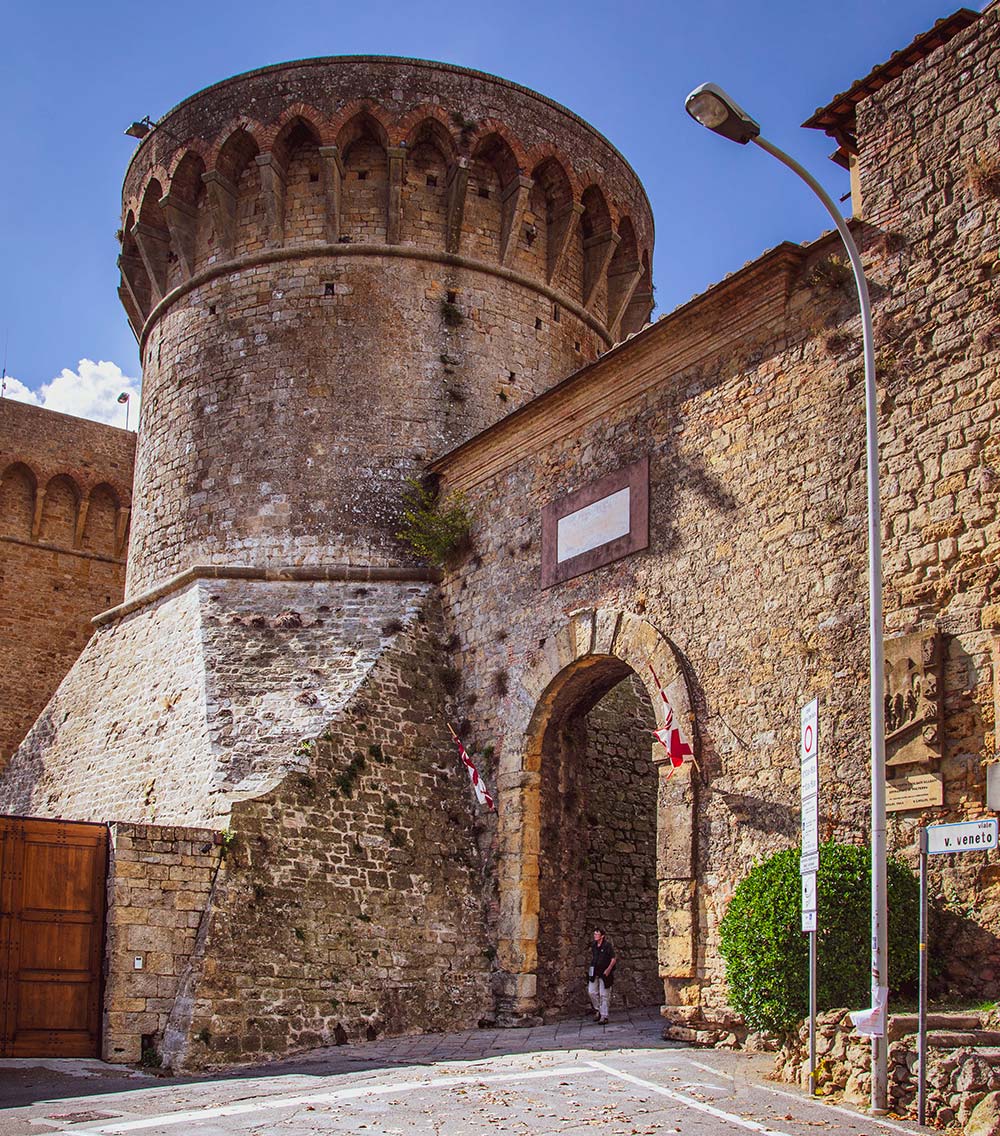
The Medici Fortress, towering over Volterra from its hilltop, was built in 1474 after Florence’s conquest. It aimed not just to defend the city but also to control it. Comprising the old Rocca from 1342 and the New Fortress from 1475, it’s now a high-security prison. Though inaccessible inside, it’s visible from afar.
The adjoining Porta a Selci gate, a 16th-century replacement, leads into the city. Interestingly, the prison runs a rehabilitation restaurant project, offering special gourmet evenings called “cene galleotte” for public attendance.
An excellent activity in Volterra is strolling along its picturesque streets. While numerous attractions concentrate around Piazza dei Priori, delving into the narrow alleys extending from this central area offers an enriching experience.
Venturing into these quieter lanes unveils quaint shops, charming eateries, and glimpses of the Tuscan countryside as you reach the outskirts of the town. The serenity, coupled with fewer crowds, enhances the allure of exploring Volterra’s side streets, making it a worthwhile endeavor during your visit. These hidden corners reveal local gems and unique perspectives that add depth to your Volterra experience.

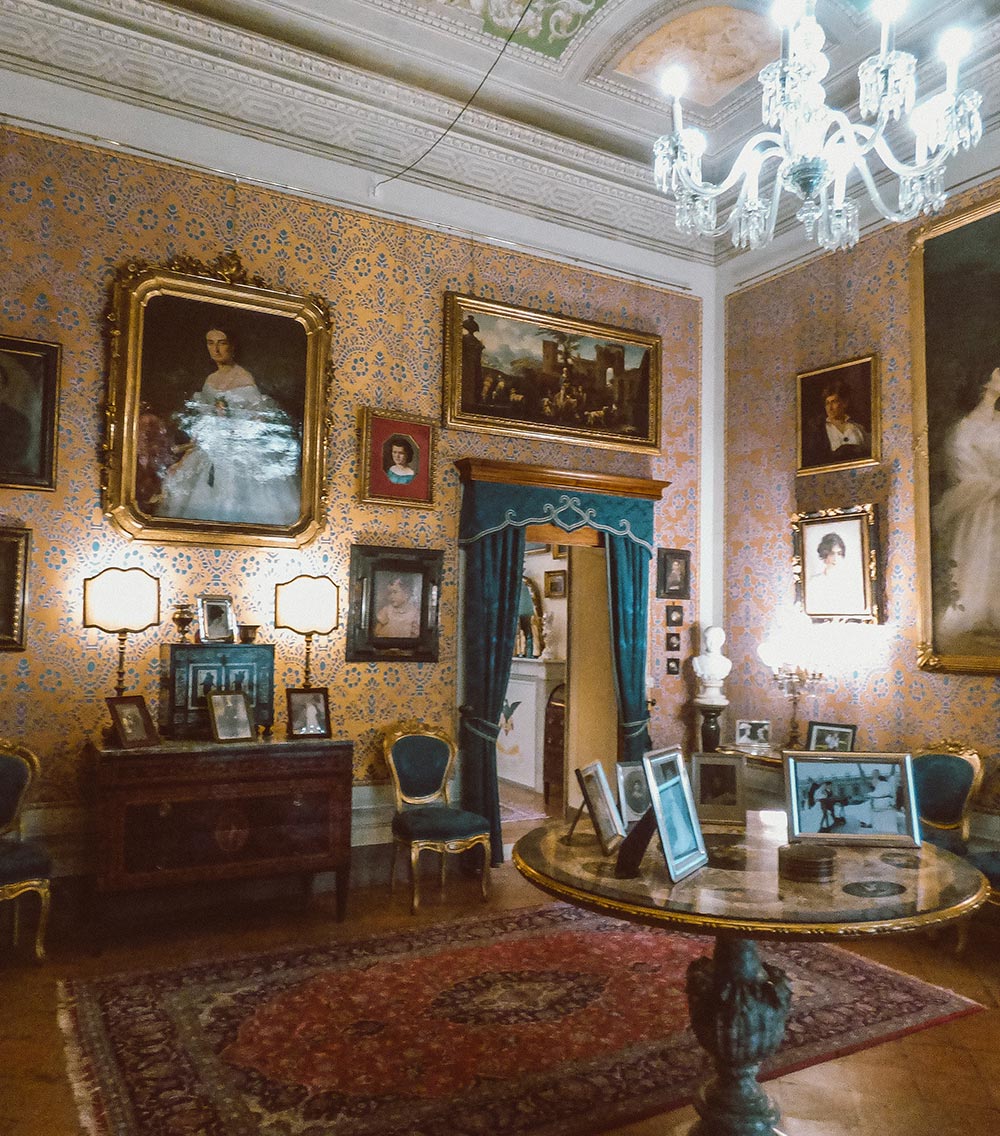
Palazzo Viti stands as one of Italy’s most stunning private residences accessible to tourists. Constructed by nobleman Attilio Incontri in the late 1500s, the palace has been enriched over centuries with a remarkable collection spanning European and Eastern art from the 1400s to the 1900s.
This distinguished residence, frequented by royalty, served as a filming location for Luchino Visconti’s movie “Vaghe stelle dell’Orsa.” Adorned with Renaissance and Baroque styles, the interior exudes magnificence. During your visit, you’ll receive a guide detailing the palace’s artworks and explore the 12 publicly accessible rooms, each showcasing exquisite treasures.
Volterra offers a range of delightful dining options. Try traditional Tuscan dishes, including pappa al pomodoro (tomato and bread soup), ribollita (vegetable and bread soup), and wild boar. Local wines, such as Vernaccia di San Gimignano, pair perfectly with your meal.
Located in the historic center, Enoteca Del Duca offers a diverse selection of Tuscan wines and a menu filled with delicious local dishes. The atmosphere is cozy and perfect for a romantic dinner.
La Carabaccia is famous for its traditional Tuscan soups and dishes. Try their carabaccia, a local onion soup. The restaurant has a warm, welcoming atmosphere.
Osteria dei Poeti provides a delightful dining experience, combining traditional Tuscan flavors with modern culinary delights. Known for their seafood specialties, it’s an excellent choice for lunch or dinner.
Hotel Villa Porta All’Arco is situated in the historic center, offering easy access to the town’s main attractions. It boasts a beautiful garden and a welcoming atmosphere.
Address: Viale Giuseppe Mazzini, 2, 56048 Volterra PI, Italy
If you prefer a more rural experience, consider staying at an agriturismo like Santa Vittoria. You’ll be surrounded by the Tuscan countryside and enjoy delicious home-cooked meals.
Address: Località Molino d’Era |, SP15, km 7, 56048 Volterra PI, Italy
Villa Rioddi is a stunning villa just outside Volterra. It offers luxurious accommodations and a peaceful retreat with beautiful views.
Address: Strada Provinciale del Monte Volterrano, 8, 56048 Volterra PI, Italy
At a bare minimum, plan on spending a half day in Volterra. This gives you just enough time to visit a few highlights. However, you could easily spend a full day in Volterra, which gives you enough time to visit the museums and historical sites, have lunch and dinner, see the Roman theater, and go shopping.
Volterra has a rich history that dates back to Etruscan times, making it one of Italy’s oldest continuously inhabited cities. It has a history of Etruscan, Roman, medieval, and Renaissance periods, with archaeological sites and architectural wonders to explore.
Volterra is renowned for its high-quality alabaster, a translucent and beautiful mineral used for sculptures, ornaments, and various crafts. The Alabaster Museum in Volterra showcases the history and craftsmanship associated with this local specialty.
For centuries, the hills surrounding Volterra have been mined for alabaster, which is then skillfully fashioned into sculptures, vases, and urns. Additionally, Volterra gained fame for its appearance in the Twilight movie series.
Volterragusto, held in mid-March, late October, and early November, highlights regional specialties like cheese, white truffles, olive oil, and chocolate.
Volterra AD 1398 takes place on the 3rd and 4th Sundays of August, where locals immerse themselves in a medieval fair, donning period attire and reliving life from 600 years ago.



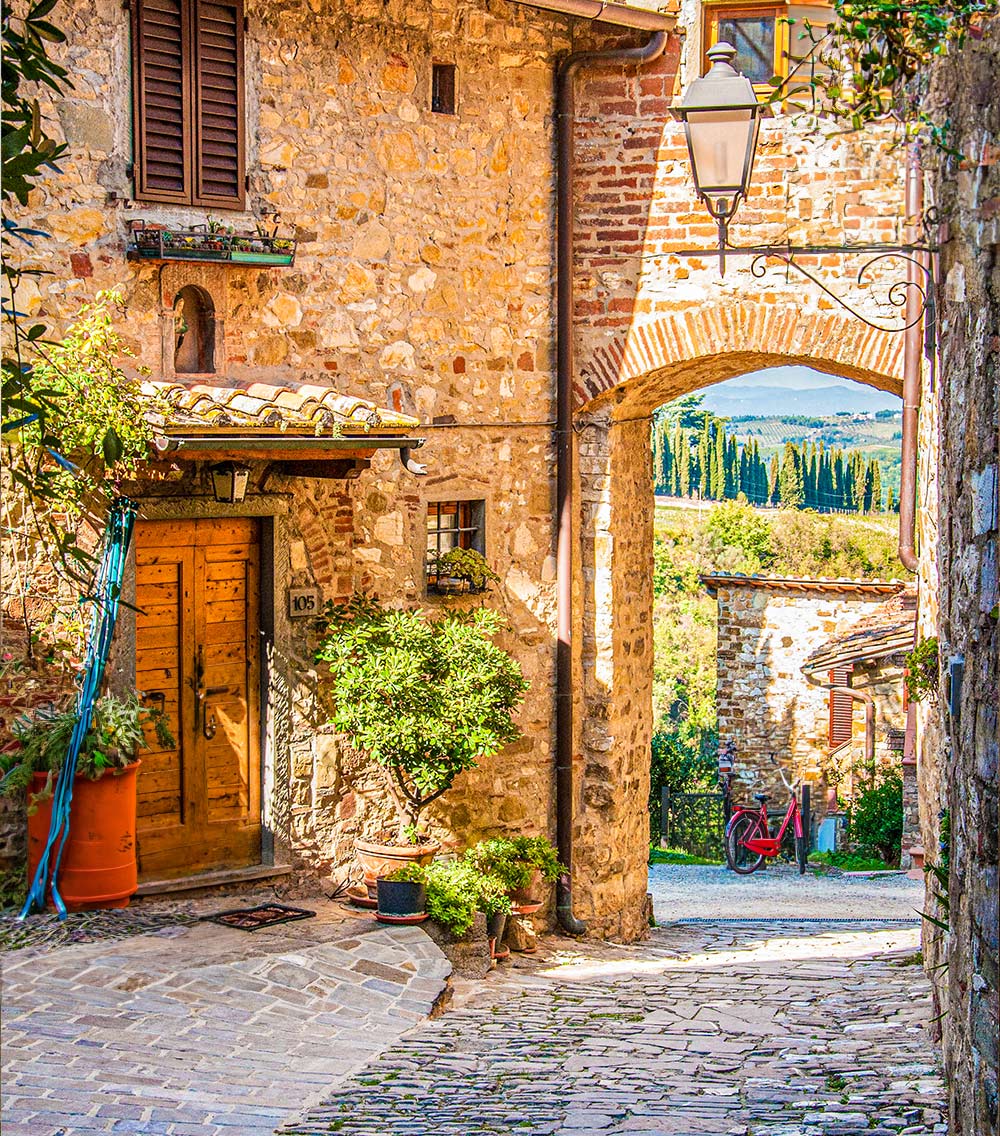
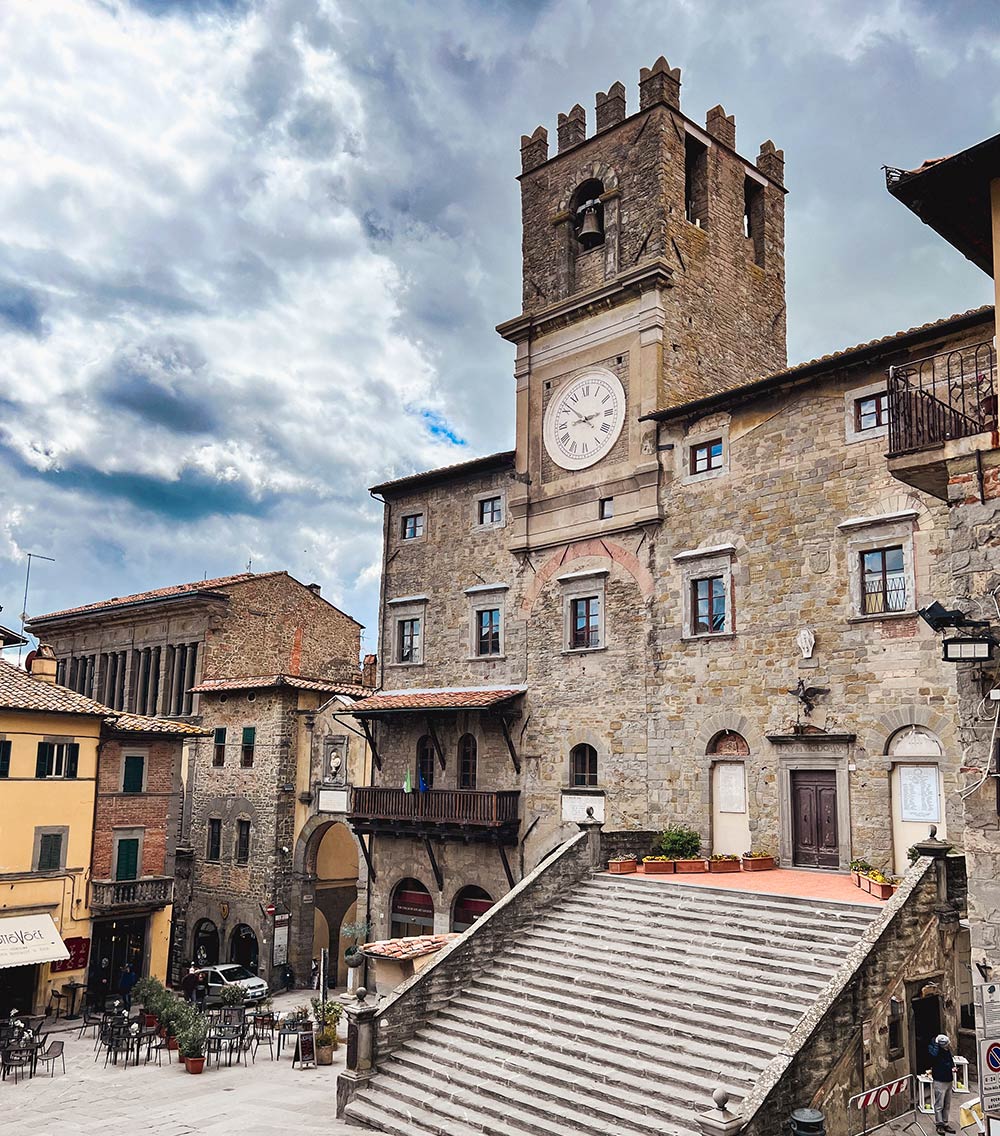
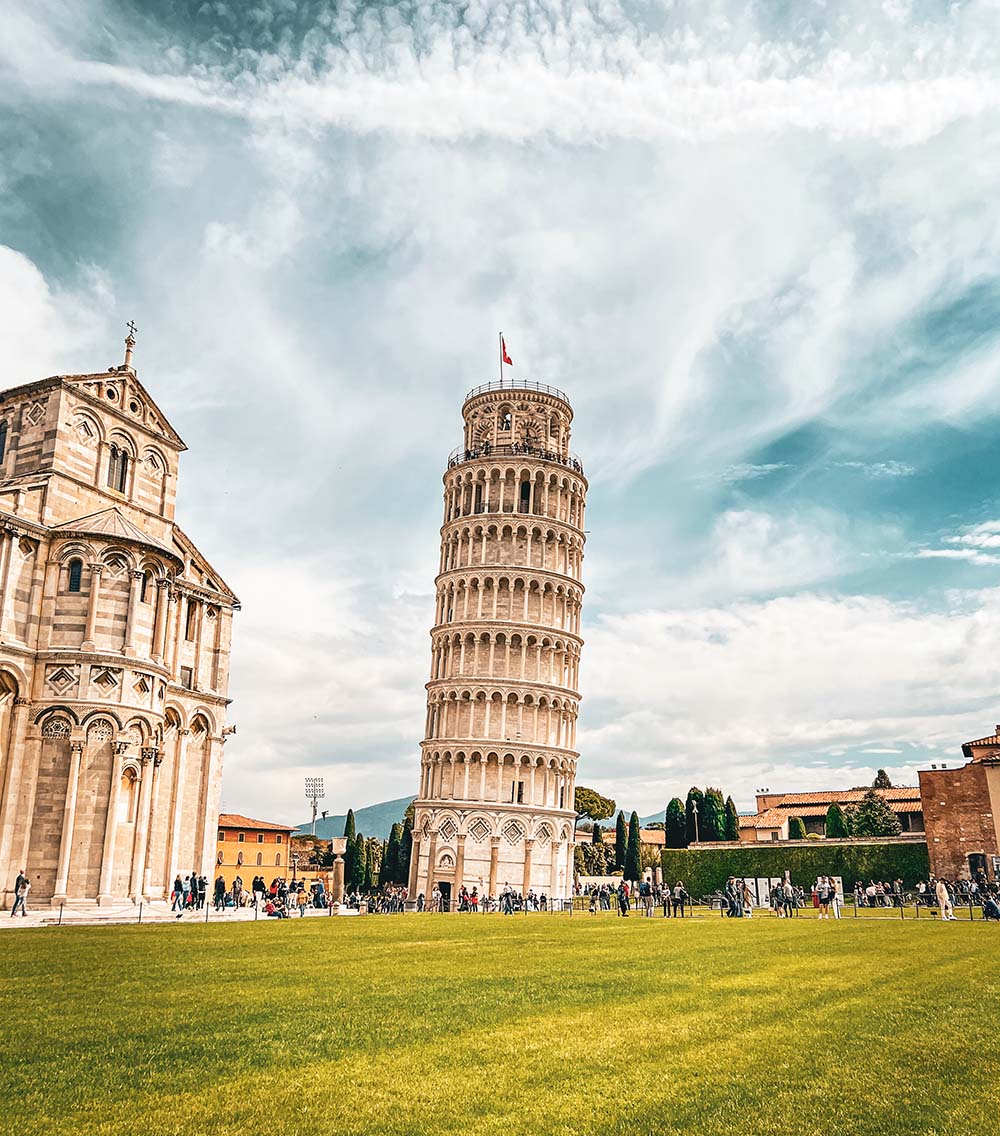
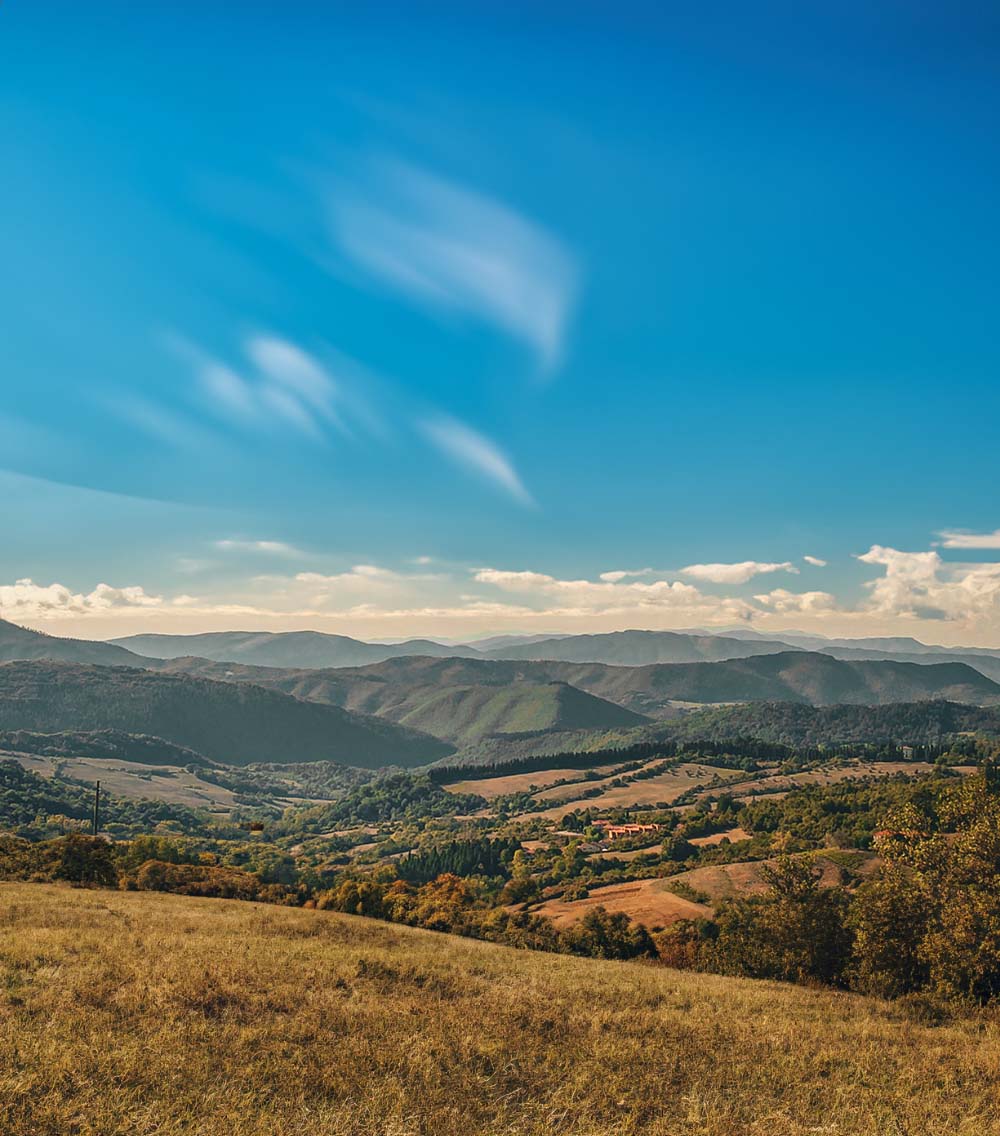
No Comments